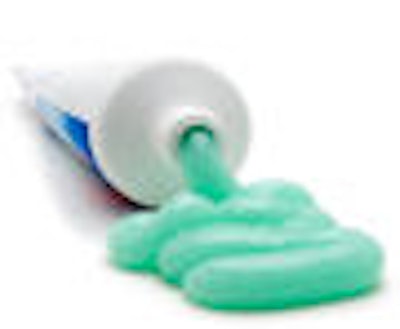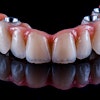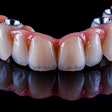
What if you had to pay $4.75 a day for toothpaste? That would be the approximate cost to U.S. consumers if they had to spend as much of their income on this common drugstore item as the world's poorest people do. This cost poses one of the biggest challenges to oral health in the developing world, according to a new report in BioMed Central's Globalization and Health journal (June 13, 2008, Vol. 4:7).
Rapid globalization has led to a change in people's eating habits, and developing countries are now embracing a Westernized diet high in refined carbohydrates. Along with this diet comes dental caries, which in some developing countries contribute to a poor quality of life and malnutrition, the study authors noted.
Fluoride toothpaste has helped many developed countries respond to this problem. Now most developing countries are trying to follow suit.
"Available data suggest that the change in diet in most developing countries is very much toward a more Western diet with its associated health problems," wrote Ann S. Goldman, M.P.H., corresponding author and research instructor at George Washington University, in an e-mail to DrBicuspid.com. "So, having access to appropriate amounts of fluoride and good oral hygiene is essential."
But the cost of the toothpaste may prove prohibitive for some, according to the report.
Another popular form of caries prevention is water fluoridation, but that has its limitations also. The study authors give the example of the U.K. where optimally fluoridated water reaches only 9% of the population. Developing countries simply cannot afford to fluoridate water because of poor infrastructure and limited financial and technological resources.
Fluoride can also be applied in a topical form as a varnish or gel, but trained personnel are required to apply it on an individual basis and treatment becomes prohibitively expensive, the authors noted.
"Although a whole range of fluoride vehicles are available for fluoride use (drinking water, salt, milk, varnish, etc.), the most widely used method for maintaining a constant low level of fluoride in the oral environment is fluoride toothpaste," they wrote. "The widespread use of fluoride toothpaste has been recognized as the single most important reason for the decline of dental caries in developed countries during the 1970s and 1980s."
For countries that can only afford the bare minimum in dental care, fluoride toothpaste is absolutely the best option, confirmed Poul Erik Petersen, D.D.S., chief of the World Health Organization's oral health program, in an interview with DrBicuspid.com.
Who can afford fluoride toothpaste?
For the study, dental associations, nongovernment oral health organizations, and individuals in 45 countries filled out a survey about the cost of fluoride toothpaste between December 2005 and March 2006.
The researchers collected information about several brands of fluoride toothpaste, including local and international brands, and then analyzed whether people could afford the least expensive brand of toothpaste available, Goldman said. They found a similar range in prices among developed and developing countries, regardless of income.
The following are some price ranges in U.S. dollars for 189 g of fluoride toothpaste:
|
The researchers calculated the cost of a year's worth of toothpaste for one person, both as a proportion of household expenditure and in terms of the number of days of work needed to cover the cost.
Not surprisingly, they found that people in poorer countries would have to spend a higher proportion of their income to buy fluoride toothpaste.
For example, the poorest 30% of the population in Kenya would have to work 9.34 days to pay for one annual dose of toothpaste per person, the researchers found.
For an average U.S. household, this would be equal to spending approximately $1,731 a year on toothpaste.
"The real issue is whether people in these countries can afford to buy toothpaste at these prices given their income," Goldman explained. "The cost of even the equivalent of one dollar a day is expensive for many people, but certainly the poorest people in developing countries."
Toothpaste for all
The authors offered different ways that fluoride toothpaste might be made more affordable in developing countries.
First, toothpaste companies could lower their prices in the developing world and increase their market there. "Manufacturers may want to balance the benefits of expanding their market versus a certain level of profits at current levels of consumption of toothpaste," Goldman stated.
The researchers also suggested that governments could tax fluoride toothpaste at a lower rate.
Finally, poor countries should focus on producing fluoride toothpaste locally and avoid expensive imported brands, they stated. Less expensive ingredients and packaging can also lower the cost.
"In view of the current extremely inequitable use of fluoride throughout countries and regions, all efforts to make fluoride and fluoride toothpaste affordable and accessible must be intensified," the authors concluded. "As a first step to addressing the issue of affordability of fluoride toothpaste in the poorer countries, in-depth country studies should be undertaken to analyze the price of toothpaste in the context of the country economies."















